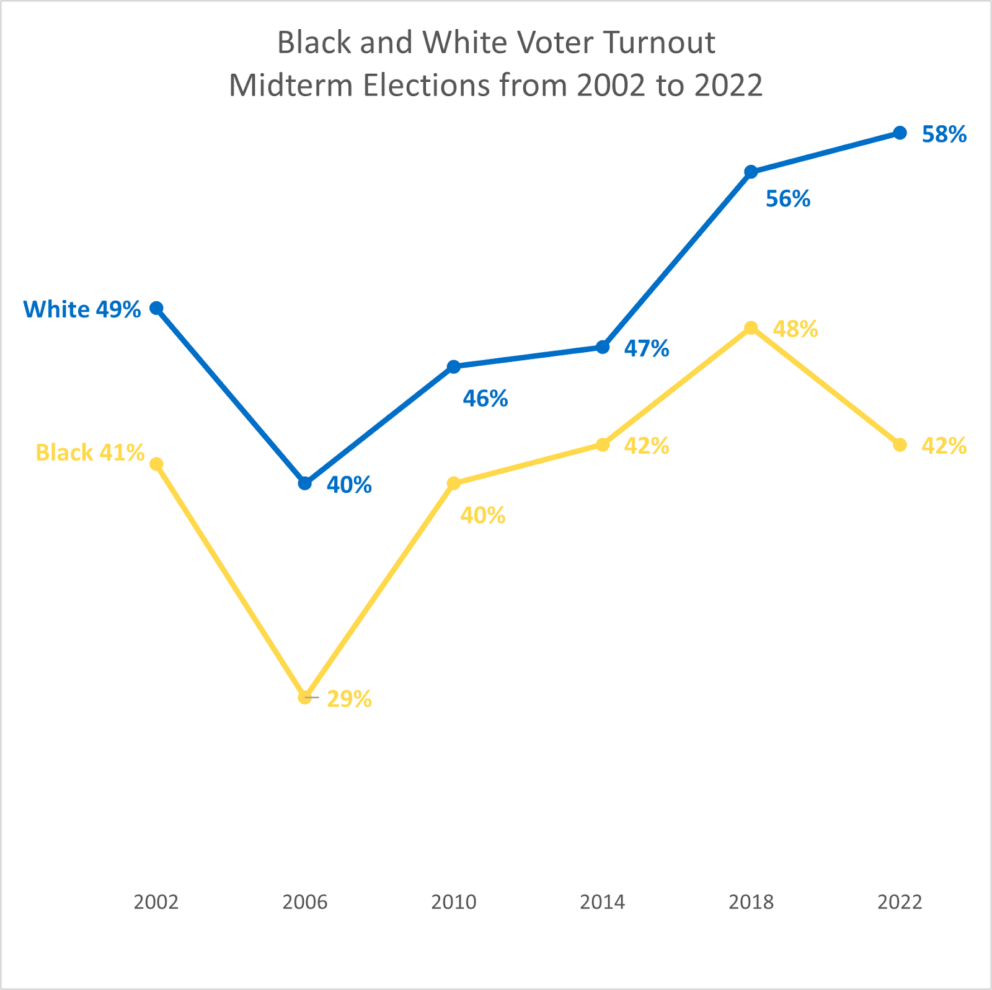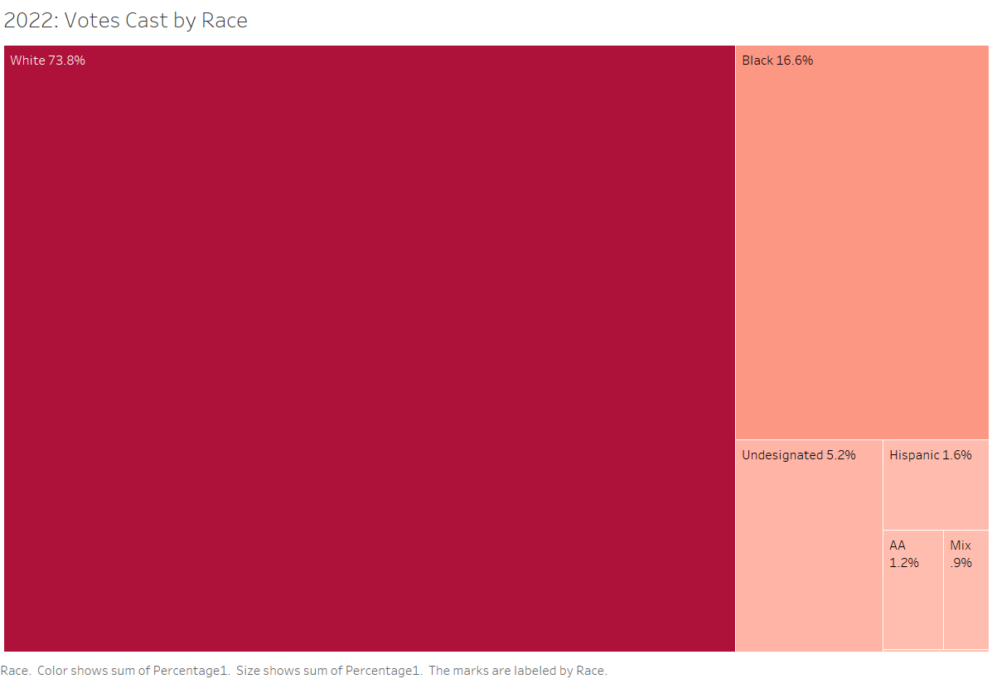2022 Midterms: How North Carolinians Turned Out
A new analysis of last year’s election in North Carolina shows that white voters achieved their highest rate of turnout for a midterm election in more than three decades, despite the fact that the overall rate of voter participation declined in 2022 from 2018.
Another surprising fact: white Democrats in North Carolina turned out to vote at a higher rate (63%) than white Republicans (61%). But Republicans won the US Senate, state court, and key legislative contests in part because there are nearly twice as many white Republicans as white Democrats in North Carolina. In other words, it would be a mistake to once again simply blame diminished Black voter turnout for losses by Democrats.
White unaffiliated voters also participated at their highest rate (52%) for a midterm election in decades.
Meanwhile, even though Cheri Beasley, a Black woman, was at the top of every ballot in the state, less than 42% of Black registered voters cast a ballot – the lowest turnout of Black voters since 2010.
“When you learn who felt energized to vote and who didn’t, the story of 2022 is as much about race as it is about a Red or Blue wave,” said Carol Moreno Cifuentes, Policy Manager of the voting rights organization Democracy North Carolina, which conducted the analysis from data at the State Board of Elections.
“The polarizing debates over critical race theory, abortion rights, gun regulation, and January 6th hearings likely energized white voters, regardless of party or gender, and they were highly motivated to have their voices heard,” Cifuentes said. “But these issues didn’t engage Black voters as much, and both major parties failed to invest in the messaging and on the ground operations needed to elevate their interest in voting. The parties and major campaigns seemed to either take Black voters for granted or ignore them.”

